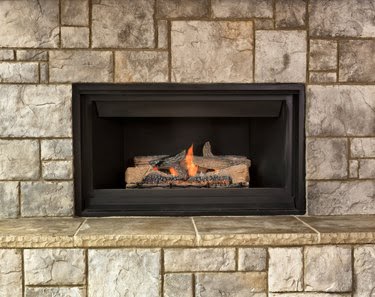Quck answer
Converting a fireplace back to wood from gas requires a few steps. First, turn off the gas supply and disconnect the gas line. Next, remove the gas logs and any other gas-related components. Clean the fireplace thoroughly, removing any residue or debris. Install a chimney cap to prevent animals and debris from entering the chimney. Lastly, prepare the fireplace for wood by checking the damper and ensuring proper ventilation. It’s important to follow safety guidelines and consult a professional if needed. Converting a fireplace back to wood can bring back the traditional charm and warmth of a wood-burning fireplace.
There’s truly nothing quite like the sensation of sitting in front of a wood-burning fireplace. The crackling sound of the wood and its distinctive aroma can create a cozy and intimate atmosphere for socializing. While there have been significant advancements in fireplace technology, wood-burning units offer a timeless experience that you might want to return to.

How to Convert a Fireplace Back to Wood From Gas
Image Credit:
tab1962/iStock/GettyImages
Convert Gas Fireplace to Wood
Converting a gas fireplace into a wood-burning one is possible in certain cases. However, not all gas fireplaces can be converted to wood. Conversion is only feasible if the fireplace was originally designed to burn wood. If the fireplace was initially built as a gas fireplace, it cannot be converted into a wood-burning unit.
This type of work may require consulting a home contractor or other experts, so it is important to seek their advice before proceeding. For your safety, it is recommended to not undertake any projects involving natural gas without the assistance of a qualified professional unless you have experience in this type of work.
Venting a Fireplace
Simply removing the gas logs and replacing them with wood logs in the fireplace is not recommended. You must first check if your venting system is capable of handling the smoke produced by burning wood. Failing to do so can result in filling your home with smoke when you use the fireplace. While it is possible to check the vents yourself, it is a good idea to contact a certified chimney sweep to inspect your fireplace system for safety before using it to burn wood.
Venting a gas fireplace is much simpler compared to venting a wood-burning fireplace. This is because wood combustion produces smoke, while gas fireplaces do not generate the same by-products. This was originally why many home builders switched to gas fireplaces instead of wood burners.
Considerations Before You Begin
If a fireplace was originally designed for wood burning and later converted to gas, there may be damage to the chimney flue itself. While gas fireplaces do not produce the same amount of smoke as wood-burning fireplaces, they do release corrosive chemicals when burning. Therefore, it is advisable to have an inspection done before reverting your fireplace back to its original state. If your flue is damaged, you can install a stainless steel flue over the existing fireplace flue.
Prior to starting the fireplace conversion, it is important to check with your local municipality to ensure compliance with building codes. Some buildings, such as registered historic homes, have strict requirements for renovations. There may also be regulations from your homeowners association or city that must be followed. Pollution laws sometimes prohibit this type of work, although you may be able to install an EPA-approved wood-burning stove.
Removing Gas Inserts
In order to convert a gas fireplace to a wood-burning stove or fireplace, it is recommended to have the system inspected for safety reasons. Ideally, you should contact a professional to carry out the work. If you choose to do the project yourself, make sure to turn off your gas line before proceeding.
It’s possible to easily remove most gas inserts using a crescent wrench. If you want to make any cosmetic changes to your fireplace, now is a great time to do so. Make sure to clean out the fireplace and ensure that the flue is functioning properly before putting the unit back together.
Converting Gas Lines
Before you can use the fireplace for wood burning, you need to completely cap off the gas line. Another option is to convert the line into a gas log lighter. The entire process can cost up to $300, assuming that the flue is in good condition. If you do the majority of the work yourself, the costs will naturally be different.
However, it’s important to only take on this type of project if you have experience working with natural gas and take appropriate safety precautions. Natural gas can cause carbon monoxide leaks that can be deadly. Carbon monoxide is a dangerous gas because it is odorless and invisible. If you are working on your fireplace and experience a headache or start feeling tired, you should leave the house immediately as you may have a leak.


